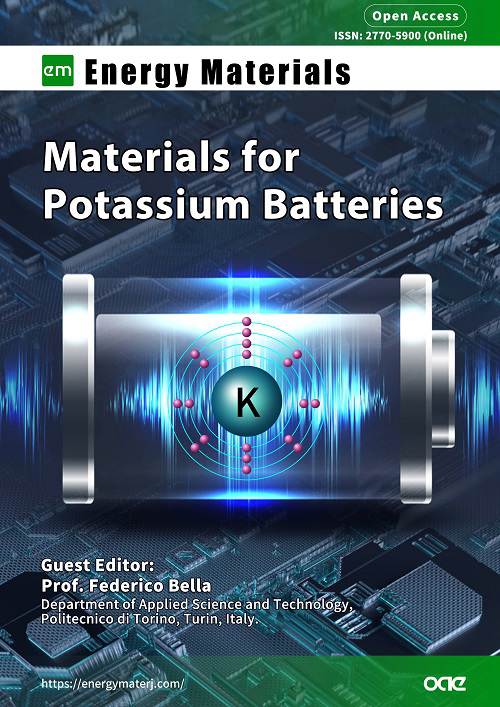
Topic: Materials for Potassium Batteries
Guest Editor(s)
Special Issue Introduction
Potassium is a highly abundant alkali metal and can realistically replace lithium in rocking chair batteries, at least for stationary applications when batteries are coupled with solar panels or wind plants. Indeed, in these cases, battery size is not relevant, while the investment cost becomes a primary target. In addition, potassium can be used in combination with light and cheap aluminum as current collector (instead of copper), since it does not alloy with this metal during the charge-discharge process. Potassium offers peculiar advantages with respect to other post-lithium cations (e.g., sodium); for example, it shows a more negative redox potential (−2.936 V vs. SHE), which is fairly close to that of lithium (−3.040 V vs. SHE). Also, K+ is a weaker Lewis acid with respect to sodium and lithium cations, thus exhibiting lower solvation (i. e., smaller solvated ions) in the liquid electrolyte. For all these reasons, the research on potassium-ion batteries has been strongly sustained over the last 3-5 years and the scientific community has developed several electrode and electrolyte materials that can reversibly store and release potassium ions.
This Special issue intends to collect cutting-edge trends in the potassium batteries field, from materials design to cell fabrication and testing, as well as Icomputational studies and market-level analysis.
This Special issue intends to collect cutting-edge trends in the potassium batteries field, from materials design to cell fabrication and testing, as well as Icomputational studies and market-level analysis.
Keywords
Potassium battery, anode, cathode, electrolyte, polymer electrolyte, post-lithium, large-scale energy storage
Submission Deadline
30 Apr 2023
Submission Information
For Author Instructions, please refer to https://www.oaepublish.com/energymater/author_instructions
For Online Submission, please login at https://oaemesas.com/login?JournalId=energymater&IssueId=EM220922
Submission Deadline: 30 Apr 2023
Contacts: Ponyo Li, Assistant Eidtor, Assistant_Editor@energymaterj.com







